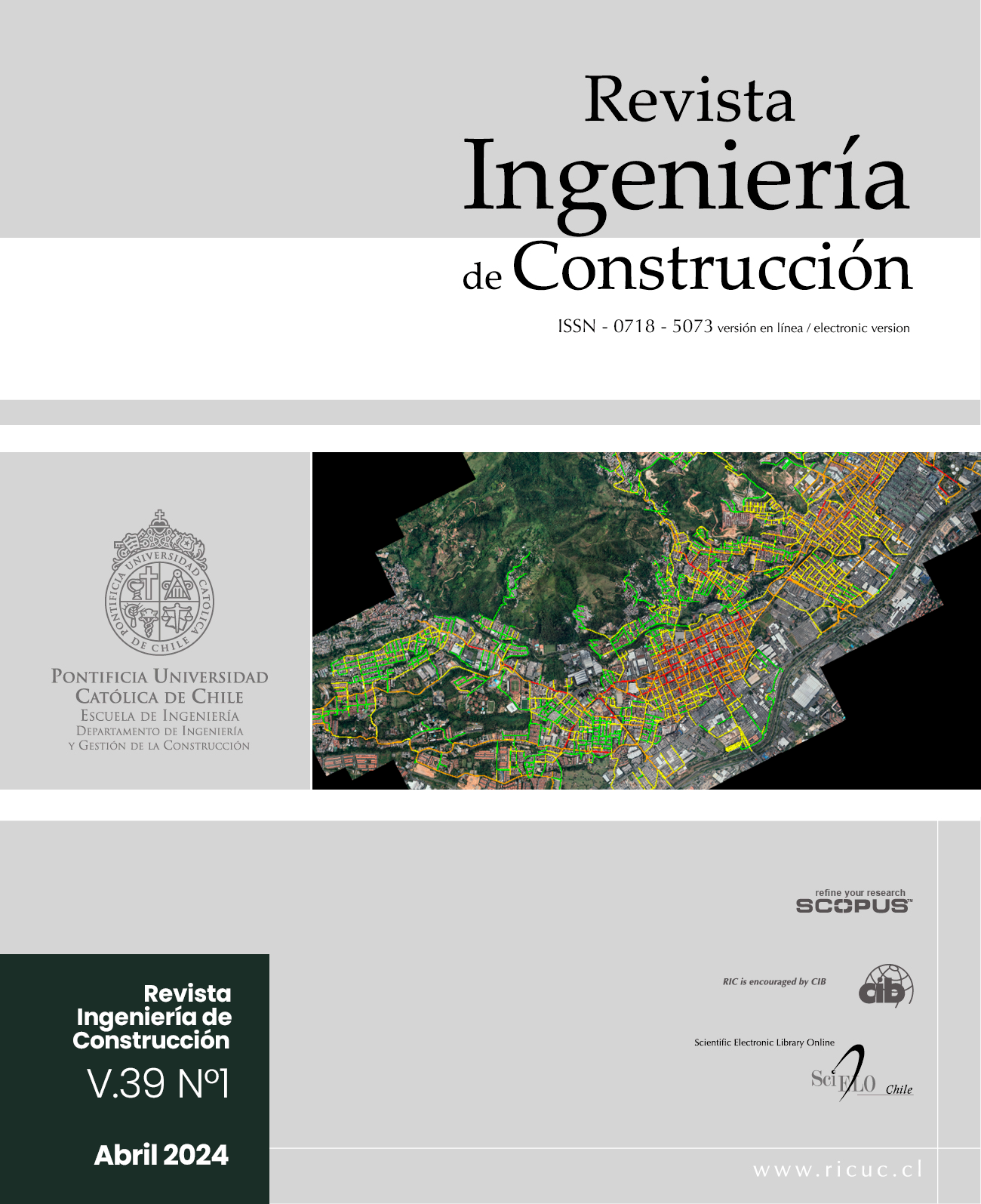Ecuadorian asphalt aging in laboratory and field.
Relationships and analysis
DOI:
https://doi.org/10.7764/RIC.00098.21Keywords:
asphalt, aging, cumulated degree-days, rheological parameters, damageAbstract
The aging of asphalt binders has a great impact on the behavior of pavement. The specifications for performance grade include tests on short-term (RTFOT) and long-term (PAV) aged residues. However, aging is greater at the top of wearing course than deeper zones, long-term tests do not correlate accurately with field aging and in the latter, the incidence of local temperature is not considered accurately. The objective is to relate the aging of Ecuadorian asphalt at the laboratory level, applying different conditioning times in the PAV, with the field aging from asphalts recovered from the top of pavements surface in selected roads of the Andean and Coastal regions, with different construction times and cumulated degree-days (CDD), using certain rheological parameters. As a result, in the Ecuadorian asphalt, the RTFOT residue is equivalent to field aging of 1.1 years in the Coastal region and 1.7 years in the Andean region. On the other hand, the usual PAV of 20 hours corresponds to field aging of 5.8 years for the Coastal region and 9.3 years for the Andean region. The progressive evolution of damage to our roads, without considering traffic, corresponds to conditioning times in the PAV between 13.0 and 26.6 hours.
Downloads
Downloads
Published
How to Cite
Issue
Section
License
Copyright (c) 2024

This work is licensed under a Creative Commons Attribution-NonCommercial-NoDerivatives 4.0 International License.

